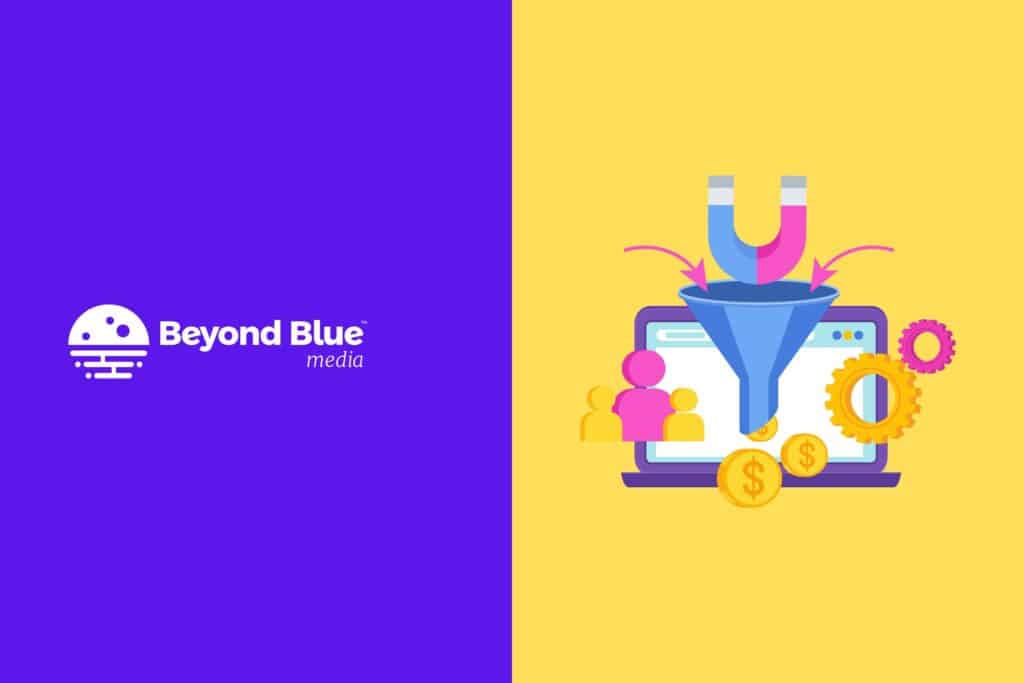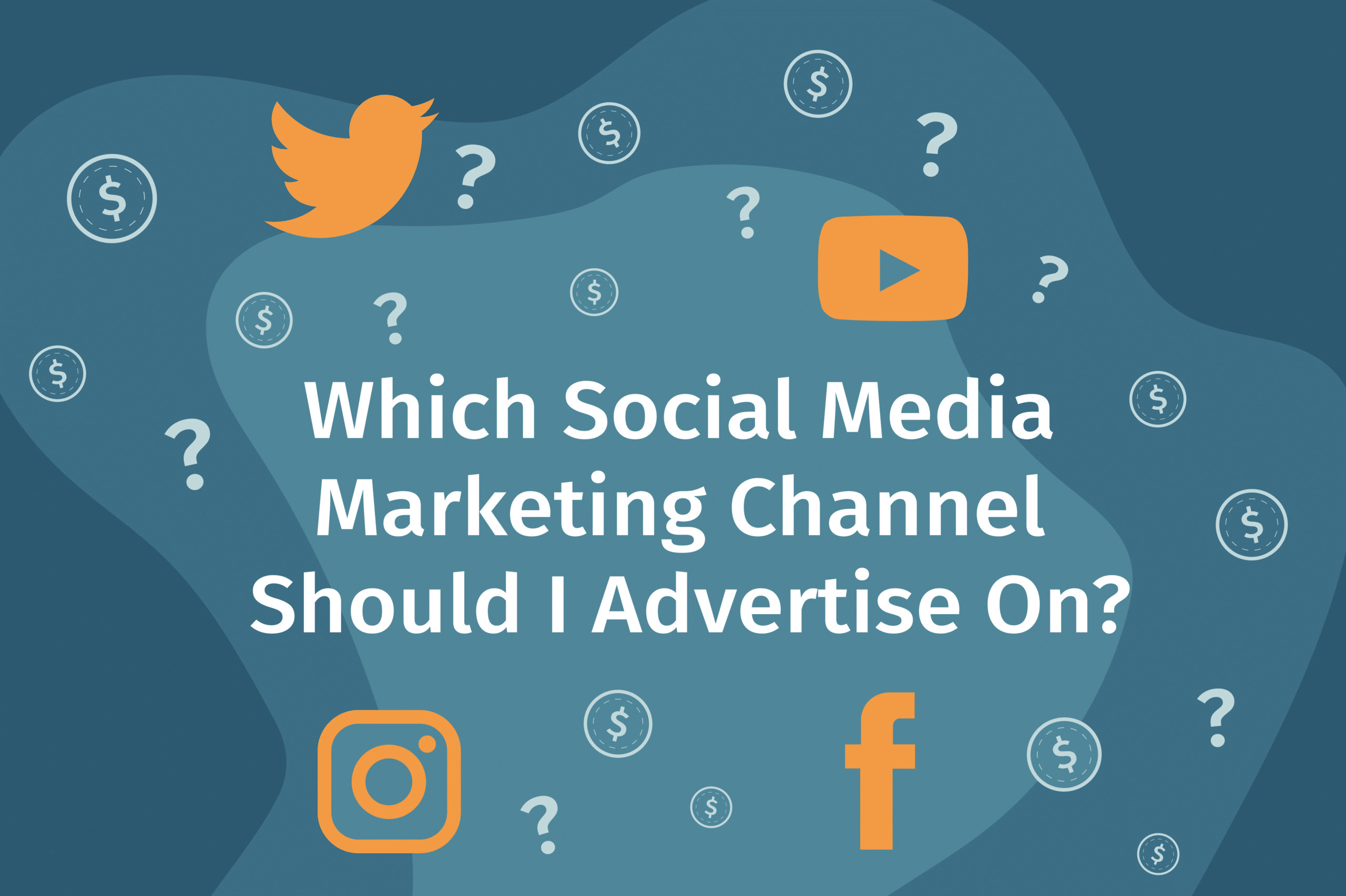
The expansive land of online marketing is riddled with twisting paths and tricky terrain to navigate. It can seem especially intimidating if you’re just starting out. You’re not alone if attempting to balance your business duties and fitting online marketing into your spare time is running you ragged.
We get it.
As a small to medium-sized business, the last thing you want to do is waste time on ineffective advertising.
When you set out to build your online presence, it’s important to know where your energies are best spent to avoid spreading yourself too thin.
Take social media for instance. Which marketing channels will benefit you and your business most?
The answer isn’t a one-size-fits-all situation. A number of factors play into where you should be advertising. But once you find your sweet spot, tending to your online presence is far more streamlined.
First things first, figure out what your goal for diving into the world of social media is.
Nail Down Your Social Media Goals
There is an abundance of reasons a business owner might shift their focus to social media and online marketing. But it’s important to nail down what you and your business can really gain from it.
One social media channel can’t be fairly compared to another. Each platform has its own benefits with its own user base that might not fit your ideal demographic.
Social media is a substantial time commitment. Be sure you have a solid goal in mind before you put hours of work into a social media channel that won’t even help you achieve your goals.
Are you aiming to increase your lead generation?
Consider finding a B2B niche. LinkedIn is renowned for its ability to connect like-minded business people. It can be useful to spread the word about your business as well! You have the ability to join groups relevant to your industry and engage in conversations with potential leads.
Do you want to drum up brand awareness?
If you want to grow your reach, establish a presence on a well-known social media platform. Facebook, Twitter, Instagram, and the like are perfect for getting in touch with your core audience. Avoid little-known platforms if you only have time to tend to a handful of accounts.
Are you looking for a space to display your visually captivating product?
Focus on photo-centric social platforms such as Instagram or Pinterest if you have an eye-catching product. In order to sustain an adequate presence on this kind of platform, it’s important to have an abundance of photos and, in some cases, short-form written content (captions).
Find Your Audience
When you’re just starting to ramp up your online presence, the name of the game is narrowing down where to place your focus.
It’s important to know that the people you want to reach are present where you’re advertising. Some channels simply aren’t as effective in reaching your audience as others.
There are several ways to confirm that you’re advertising in the right places:
Check Where Your Competitors Are
Do a quick search on your direct competitors. What platforms do they seem to be focusing on?
Be sure to take note of how active they are and generally how much engagement they create. If you notice a trend within your industry, shift your focus in that direction. For example, if you run a bakery and you see customers actively engaging with your competitors on Instagram, it’s advisable to put some effort into this branch of social media.
Check the Demographics of a Given Platform
You likely already have an idea of who your key demographic is. Another way to determine where to focus your efforts is to find out where your ideal audience exists online.
To do so, take a look at the data on the typical age, gender, socioeconomic standing, or any other relevant identity held by the customer you hope to reach.
Check Which Existing Platforms Are Already Getting Traffic
You might be in the position where you have an entire suite of existing social media channels but you want to trim it down to only the most essential.
The best way to figure out which platforms to focus on is to see which has the most established engagement. Where are you getting the most traffic? Narrow your focus down to the platforms you see the most potential in.
If you happen to have relatively equal engagement across your established channels, return to the steps above to narrow down the best place to advertise.
Consider Your Content and Where it Will Shine
Each social media channel highlights certain types of content better than others. Think of what you want to share with your clients. What content does your industry naturally lend well to?
The goal is to make your content creation almost seamless with your existing routine. For instance, if you’re a contractor, taking before and after photos can be an easy addition to your workflow.
Once you nail down your niche, it’s time to see where it will perform best. Let’s dive into some of the most popular social media platforms and discuss what kind of content they support.
Facebook is social media’s jack of all trades. With well over 1 billion MAUs (or monthly active users), this platform has the greatest potential reach of any online space. That makes it a great option for both business-to-customer and business-to-business interactions.

Aside from its massive base of users, Facebook is also a great online space because it supports various types of content. Businesses can use text, images, or videos to promote themselves.
Some other unique content options include Facebook Live and Events. These are great tools to engage your audience in a personal way.

Facebook Messenger is almost a separate channel in and of itself. It’s been a standalone app since 2017.
Subsequently, it’s taken on a major role in online marketing and customer service. According to Sentient Decision Science, once a user connects with a business via Messenger, it becomes their go-to means of communication. Businesses also have the option to offer appointment reminders, newsletter-like updates, and more!
Advertising on Facebook
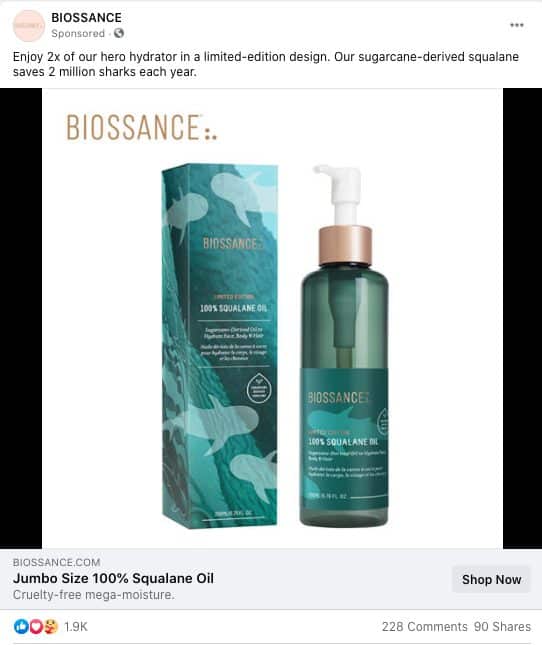
Facebook is by and large the king of social media advertising. With a host of advanced micro-targeting tools, you can rest assured that you’re reaching your ideal audience. If you’re looking for a stellar conversion rate and ROI, you have to take advantage of Facebook ads.
You can craft a wide array of ads in the Facebook Ads Manager center:
Image ads are probably the most simple of all Facebook ads. They appear on a user’s timeline with a caption and sometimes a call-to-action button.
Video ads can appear on the News Feed or between Stories. They can also play as an in-stream ad.
Video poll ads are an interactive, mobile-only option. It gives your audience a chance to answer a poll.
Carousel ads can display up to 10 images, videos, or a combination of both.
Slideshow ads also give advertisers the option to display multiple photos. But this ad formats them in an eye-catching slideshow.
Collection ads have a similar look to a carousel ad but incorporate an interactive component. Each photo showcases a different product and the user can buy it right there on the app. This type of ad is only offered on mobile.
An Instant Experience ad is an immersive, full-screen ad meant to highlight your brand. Facebook offers multiple templates to make building this type of ad out easier than you may think.
There are two kinds of Messenger ads: sponsored messages and click-to-messenger. The first actually shows up in a user’s Messenger Inbox. The second appears on the Newsfeed and gives users the option to start the conversion process with your business.
Stories ads are vertical, full-screen ads placed between Stories.
Stories augmented reality ads use to filter and lens technology to engage your audience. You can create fun, face-altering effects and branded filters.
Playable ads are another interactive option. Brands can create a mini-game their audience can play right on Facebook to drum up brand recognition.
Instagram is rapidly growing into so much more than just a photo-sharing app! At its core, it will always be driven by aesthetically pleasing visuals. But that can lend itself well to certain types of businesses.

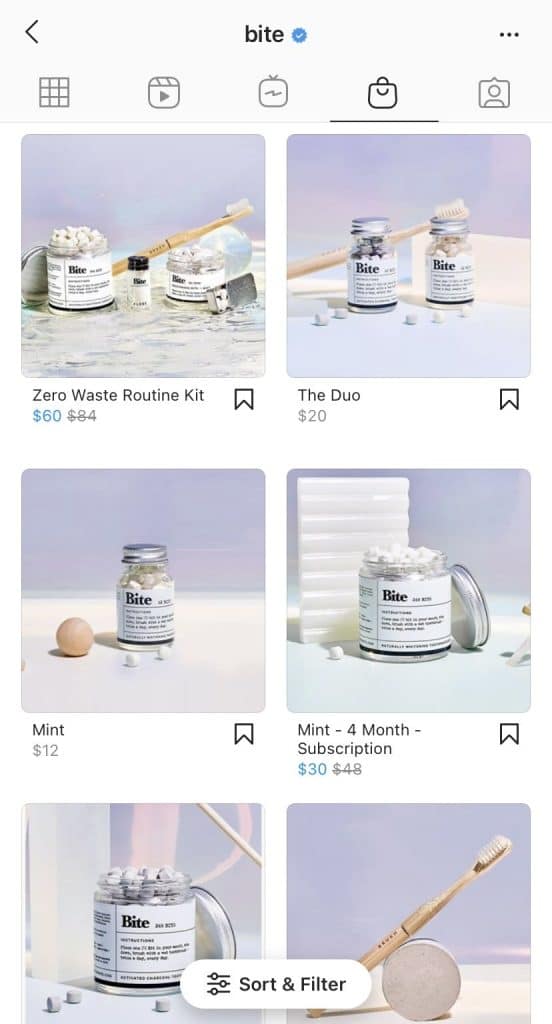
This platform can be an especially compelling space for eCommerce businesses to explore. With features such as in-app Instagram Shopping, it’s easy for a customer to save and purchase products right on Instagram.
Advertising on Instagram
This visually dynamic app is a wonderful place to advertise if you have the right demographic. Since Facebook is Instagram’s parent company, you can use its advanced targeting tools to connect with your audience. You can even use Facebook Ads Manager to craft your ads.
There are a few options you can choose from:
Stories ads appear in between a user’s Stories. This full-screen image or video ad features a swipe-up option at the bottom that leads a user to your desired landing page.
Photo, video, and carousel ads populate within a user’s timeline. They will be marked as sponsored at the top and feature a call-to-action link at the bottom.
Collection ads also appear in the timeline. But they give users the option to purchase an item directly from the post. You can display your fares on a photo or video and if a user clicks on your ad, the Instagram Instant Experience Storefront will open up with the option to buy the featured items.
Explore ads are similar to photo and video ads. But rather than showing up on the timeline, they exist in the Explore area of Instagram. It won’t show up in the main grid but it will once a user clicks a photo and starts to scroll.
IGTV ads are in the works but haven’t been rolled out completely yet (as of October 2020). These ads are still in the testing phase but what we do know is video creators will get 55% of the revenue.
Instagram Shopping ads are tailored for those taking advantage of the in-app shopping function. Your ads will then lead potential customers directly to the product description page.
You have 280 characters to convey a message to your audience on Twitter. This makes it a great platform for efficiently keeping your audience in the loop. You can share quick thoughts, promotions, or general updates using Twitter.
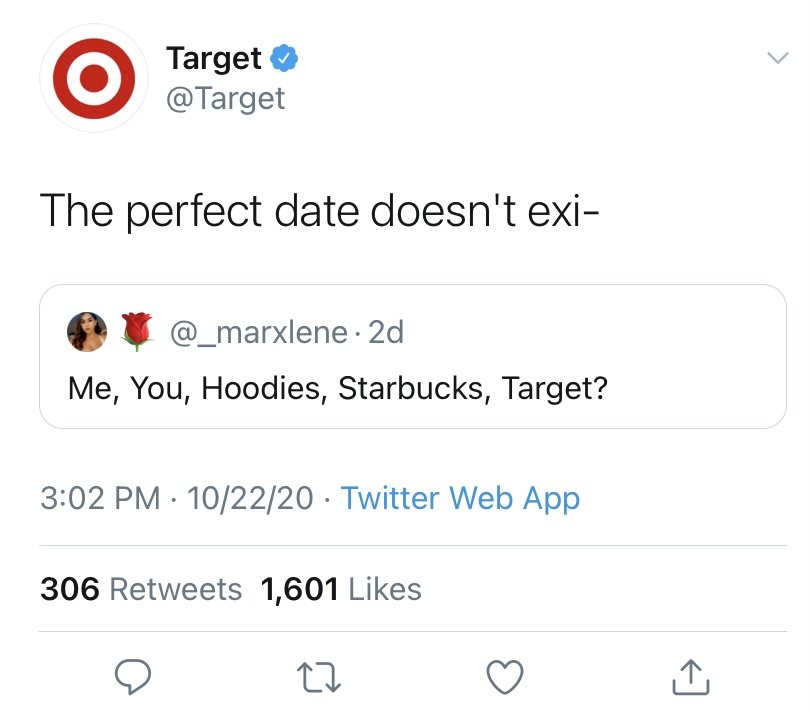
Since the formatting is short and casual, Twitter is ideal for building a genuine connection with your customers or clients. It gives you a chance to display your brand personality and hear back from the audience in real time.
Advertising on Twitter
Twitter is an attractive platform for thrifty businesses. With no minimum advertising budget and an intuitive ad format, it’s a fairly easy place to start if you’re new to advertising on social media.
Promoted Tweets appear in the timeline alongside regular Tweets. The key difference between the two is an ad will mark it as “Promoted” in the bottom left corner. But you can select text up to 280 characters, photos, or a video just like a normal Tweet.
A promoted account ad places your Twitter page in the “Who to follow”. This ad will look similar to other suggested accounts but it will have “Promoted” marked at the bottom as well.
Promoted trends show up with organic trending topics. When a user clicks on it, they’ll see search results for your selected topic and a promoted Tweet at the top of the feed.
Promoted moments are a collection of Tweets displayed in a sort of slideshow. You can curate a story with your collection and once it’s compiled, you can promote it on the Twitter timeline.
Unsure where to start? Automated ads can help streamline the process. For $99 per month, Twitter will take the first 10 tweets you create every day and add them to your campaign. All you have to do is select your target audience and Tweet.
Youtube
Another popular platform is Youtube. As you likely know, Youtube is a wildly popular video hosting platform. Just about every industry is present on this platform in one way or another. But it can be challenging to maintain if you don’t have the time or the resources to be consistent.

Youtube might be for you if you have the time and energy to post long-form videos on at least a semi-regular basis. This is called “display advertising”. You could post how-to’s specific to your business, information on industry knowledge, or updates on what’s going on in your business.
Advertising on Youtube
Youtube is the world’s second most popular website with a whopping 2 billion (yes, billion with a ‘b’) MAUs. That’s a lot of potential reaches if you play your cards right! Advertising on Youtube is a bit confusing but once you get the lay of the land you can achieve an amazing ROI.
There are 6 different kinds of Youtube ads:
Skippable in-stream ads appear before or during a video. They’re also referred to as “pre-roll” or “mid-roll” ads. A user can skip them after five seconds of watching the ad. These are great for the advertiser because you only pay when a viewer chooses to watch past that five seconds.
Non-skippable in-stream ads are the option for you if you want to assure your audience views your whole ad. They can be up to 15 seconds long. Just like a skippable ad, these appear before or during a video.
Video discovery ads show up on the search results page alongside organic results. A user must choose to click on your ad to view the video.
Non-video ads are a great option for those with a smaller budget. They’ll appear along the bottom of a video as a banner or along the right-hand sidebar. The aim is for these to show up in tandem with related content but that doesn’t always happen.
TikTok
Although it’s a relatively new social media platform, TikTok is quickly emerging as one of the most popular apps worldwide. It might be known for the synchronized dances users often post but, with over 800 million MAUs, it’s nothing to scoff over!
Despite what you may believe, it could actually be a great space for a business to engage in.
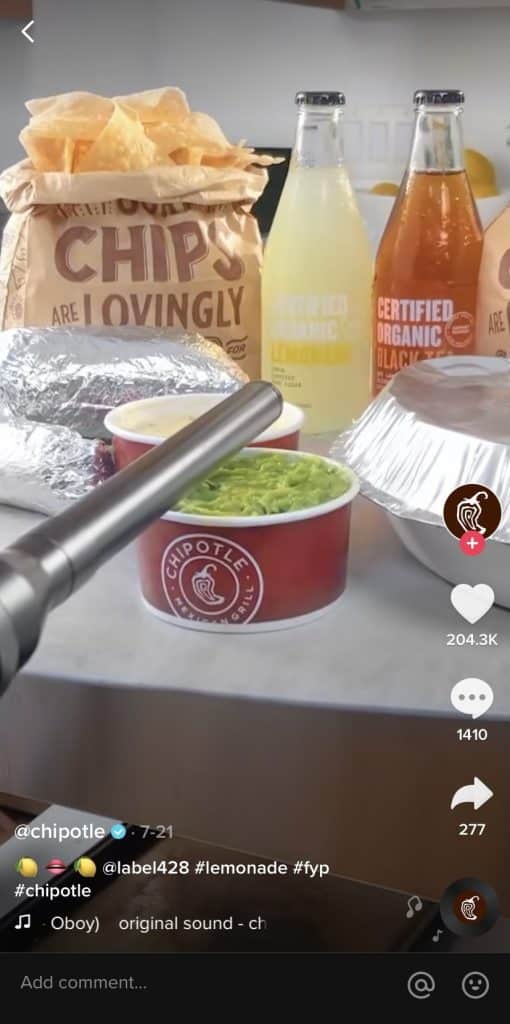
If you like the idea of video content but don’t have the time for Youtube, TikTok is the ideal alternative. It gives companies a chance to have fun with social media and give their audience a peek behind the curtain.
With videos under 60 seconds, it can be an attainable goal to create consistent content for this app.
Advertising on Tiktok
Before you decide to advertise on TikTok, keep in mind that most of the users belong to a young demographic. 66% of TikTok’s users are younger than 30 and 41% are between the ages of 16 to 24. Also, note that advertising on TikTok can be a pricey endeavor. The average CPM (cost per 1,000 impressions) starts at $10 and goes up from there.
If you decide your target audience is on TikTok and your company can allocate the necessary funds to create a campaign, you can create an ad account. From there you can use their video creation kit to craft your ad. You can create three different kinds of ads on TikTok: brand takeovers, in-feed ads, and hashtag challenges.
Brand takeovers will pop up as soon as a user opens the app. It will have a similar format to a normal TikTok but can link out to another video on the app, an external landing page, or another app.
In-feed ads are dispersed throughout the user’s video queue. They will have a similar look to the brand takeover and also redirect the user to your website or app.
Hashtag ads are used to encourage user-generated content. You can create a sponsored hashtag and for six days, TikTokers can use it as a prompt to create a video on your brand’s behalf.
When we say “social media”, Pinterest probably isn’t the first thing to come to mind. However, it is quite valuable if you know what you’re doing.
Pinterest is another visually-driven platform. It’s well known for featuring DIYs, recipes, and other sources of inspiration. Usually, the photos feature a link back to an external website (the business’s website). This gives the user the option to “pin” something they like and refer back to it later.

Much like Instagram, you can thrive on Pinterest if you’re in a visually dynamic industry. You can feature your products with a link back to your eCommerce site or perhaps create written content you feel might be “pinnable” to increase traffic to your website.
Advertising on Pinterest
With 320 million MAUs, this platform offers a lot of potential reach for a business. It’s a great place to consider placing ads if your audience is present. Pinterest is a playground for users with high buyer intent. In fact, Pinterest reports an average of $2 in profit for every $1 spent on advertisements on their site (a ROAS of 200%). But keep in mind that the average user is female and between the ages of 18-49.
There are a few different ads you can place on Pinterest: promoted Pins promoted carousels, promoted videos, promoted app Pins, promoted story Pins, and buyable Pins. Each is formatted to be a “one-tap Pin” meaning it directs a user to your landing page as soon as they click it.
Promoted Pins, carousels, and videos all function in a similar fashion. They appear amongst organic Pins as a user scrolls through. They have a very similar look and feel to a normal Pin. The key distinction is the “Promoted by” sticker tagged to the bottom.
Promoted app Pins give users an option to download your app directly from Pinterest. They have a similar look to the ads we just talked about but they feature an “Install” button at the bottom.
Promoted Story Pins appear in a user’s home feed. They are a multi-page, long-form Pin that can feature up to 20 pages of images and text. This type of ad is still being rolled out by Pinterest so it’s not immediately available to everyone. Businesses in the US can request access to use it.
Buyable Pins give users the option to buy an item directly from your ad. You can tag the image you select with white dots linked to your products. This type of ad works well with a well-composed photo including one or multiple products you offer in an aesthetically pleasing fashion.
Snapchat
Although it might not seem like the first place you’d think of when searching for a platform to advertise on, Snapchat can actually be a great tool for small to medium-sized businesses. On the user’s end, it’s a social app that allows you to share temporary photos and text to friends that typically disappear when you’re done viewing it.
Snapchat is ripe with opportunities for businesses too! With around 300 million MAUs, there’s plenty of potentials to reach a vast audience. But according to Omnicore, the caveat for business owners is that most people who use Snapchat fall under the age of 34 years old. If that’s a segment of your target audience, fantastic! Advertising on this platform might just be worth your while.
Advertising on Snapchat
As we mentioned, Snapchat’s base of users is generally quite young. If you choose to advertise here, be sure that is the demographic you want to reach. Also, keep in mind the conversion rates on Snapchat aren’t nearly as impressive as monoliths like Facebook. Dip your toes in with a small budget test before vomiting into a full-on ads campaign on Snapchat.
There are three main methods to advertise on Snapchat: Snap ads, sponsored geofilters, and sponsored lenses. Each offers a different way to connect with your core audience in a unique forum.
Snap ads appear in between the stories of a user’s friends and within the Snapchat Discover page. They’re formatted to look like a Snap. That means your video or photo should be full-screen and vertical. Videos are limited to 10-seconds. You can add interactive elements such as swipe-up links and the option to jump to another more in-depth version of the story.
Sponsored geofilters appear on the user’s end when they enter a certain location. They work in a similar fashion to city and neighborhood geofilters you may have seen before. Users can apply it to show their friends where they are which can boost your business’s visibility.
But they’re not always limited to a small geographic area. You can also apply them nationwide for a specific event, occasion, or holiday. Snapchat makes it easy to craft a geofilter with its in-app design feature. Simply go to the settings and locate the On-Demand Geofilters section. You can craft your own for as little as $5.99.
Sponsored lenses are similar to geofilters but go a step further with interactive elements. They can be applied before or after someone takes a photo or video. Using Snapchat’s facial recognition technology, a sponsored lens can alter the appearance of someone taking a selfie. You’ve likely seen the most popular versions of these such as the flower crown and dog filter. Businesses can create their own lens their target audience can engage with.
What Resources Can You Dedicate to Social Media?
Running a business and maintaining an active presence online can be a tricky juggling act. When evaluating what social media platforms you want to take on, it’s important to be honest about how much time you can truly dedicate to them. Sure, you can create a Facebook, Instagram, Youtube, and Twitter but do you really have the means to successfully keep them running?
Consistency is extremely important in social media. If you start out posting regularly and eventually taper off because you’re overwhelmed, you won’t see much growth or lead generation.
It’s also important to consider your ad spend. Do you have enough money allocated to each of the social media platforms you’re advertising on? Or are you spreading your funds too thin? It is important to advertise across platforms but it could be inefficient to spend, for example, a $1,000 budget across Facebook, Google, LinkedIn, and Youtube.
Consider Getting Social Media Advertising Help
Even with the time and resources necessary to run a smooth social media campaign, it can be a chore to fit it into your busy schedule as a business owner. Don’t put the world on your shoulders. Let a seasoned team of experts help alleviate some of the stress of online marketing!
Hiring an ads team that is familiar with social media marketing to handle your channels is one of the most effective ways to improve your online presence and optimize your ROI (return on investment). You can hand over the bulk of your work to your marketers and regain the precious time you need to run a successful business.
At Beyond Blue Media, we strive to take your business to the next level. We implement an individualized marketing strategy tailored to your unique brand and business goals. Not only can we help take the grunt work out of social media, but we can also assist in sprucing up your website, SEO efforts, ads, and more!
Contact us today to see how we can launch your business to new heights!


